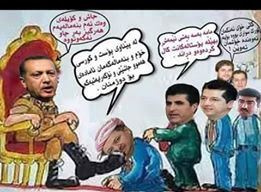Air force chief: Iranians fired 32 rockets at Golan on May 10
During Israeli counterstrike, Syrian air defense launched more than 100 anti-aircraft missiles at IAF jets, Maj. Gen. Norkin tells visiting military officials.
The head of the Israeli Air Force revealed on Tuesday that Iranian forces fired significantly more rockets at military positions on the Golan Heights in an attack earlier this month than the army had previously claimed.
According to Maj. Gen. Amikam Norkin, the Islamic Revolutionary Guard Corps’ al-Quds Force launched 32 rockets at Israeli bases on May 10, not 20 as the army had initially said.
Though the air force chief amended the number of rockets fired, he maintained that the result of the Iranian attack was the same as previously reported: Four of the rockets were intercepted by the Iron Dome missile defense system, while the rest fell short of the border and landed in Syria.
The Lebanese Hezbollah terror group, a close ally of both Iran and Syrian dictator Bashar Assad, said last week that Israel had lied about the extent of the Iranian attack.
“Israel said that only 20 rockets were fired, some of which were downed, but the truth is that 55 rockets some of which were of heavy caliber were fired at a number of military posts, creating huge explosions that forced all residents in the Golan and some in northern Israel to scramble to bomb shelters in panic,” said the group’s leader, Hassan Nasrallah, according to Naharnet.
In response to the IRGC attack, Israel conducted dozens of raids against Iranian targets in Syria, hitting approximately 50 positions.
During Israel’s reprisal raid, Assad regime air defenses fired more than 100 surface-to-air missiles at the Israeli fighter jets, Norkin said, speaking at an event for visiting air force chiefs.
Israel retaliated by destroying at least four varieties of Syrian air defense systems, both older Soviet-era models and state-of-the-art Russian platforms, according to the IDF.
Dozens of senior officers from militaries around the world arrived in Israel this week for a three-day conference organized by the air force, the largest such event held in Israel in at least 20 years, a senior IAF official told reporters on Monday.
The focus of the event is “air superiority as a bridge to regional stability,” the air force officer said, speaking on condition of anonymity.
More than 20 countries were sending representatives, either the heads of their air forces or their deputies, including the United States, the United Kingdom, France, India, Vietnam, Poland, Romania, Canada, Finland, Brazil, Holland, Cyprus, the Czech Republic, Croatia, Italy, Greece, Belgium and Austria.
The air force refused to provide a full list of attendees, likely as a courtesy to countries that preferred not to flaunt their military ties to Israel, notably Arab- and Muslim-majority nations.
The air force officers were scheduled to hear speeches by a variety of Israeli and foreign officials in the Tel Aviv suburb of Herzliya on Tuesday. The next day the visiting air officers will be flown around the country by IAF pilots.
On Tuesday, in addition to IAF chief Norkin, the conference-goers were set to hear from former senior defense official Amos Gilad, a central voice in Israel’s strategic planning; Danny Shapira, one of the founders of the IAF; Marillyn Hewson, CEO of Lockheed Martin; Yossi Leshem, a renowned Israeli ornithologist who has worked closely with the IAF; US Air Force Gen. Tod Wolters, commander of the US Air Force in Europe; Australian Maj. Gen. Simon Stuart, head of the peacekeeping force in Egypt’s Sinai Peninsula; and a number of IAF veterans who now work in Israeli start-ups.
The CEO of Lockheed Martin, which manufactures the F-35 fighter jet, is expected to speak about the importance of stealth technology in air superiority, the IAF officer said.
Following the speeches in Herzliya, the conference attendees will travel to the army’s Tel Aviv headquarters, known as the Kirya, to meet IDF Chief of Staff Gadi Eisenkot and receive a briefing from him on Israel’s security situation on top of the Kirya’s main building.
They will also travel across the street to the basement under the now-swanky Sarona Market where the Israeli Air Force was founded in 1948.
https://www.timesofisrael.com/air-force-chief-iranians-fired-32-rockets-at-golan-on-may-10/
























.jpg)

















































.jpg)






Inga kommentarer:
Skicka en kommentar